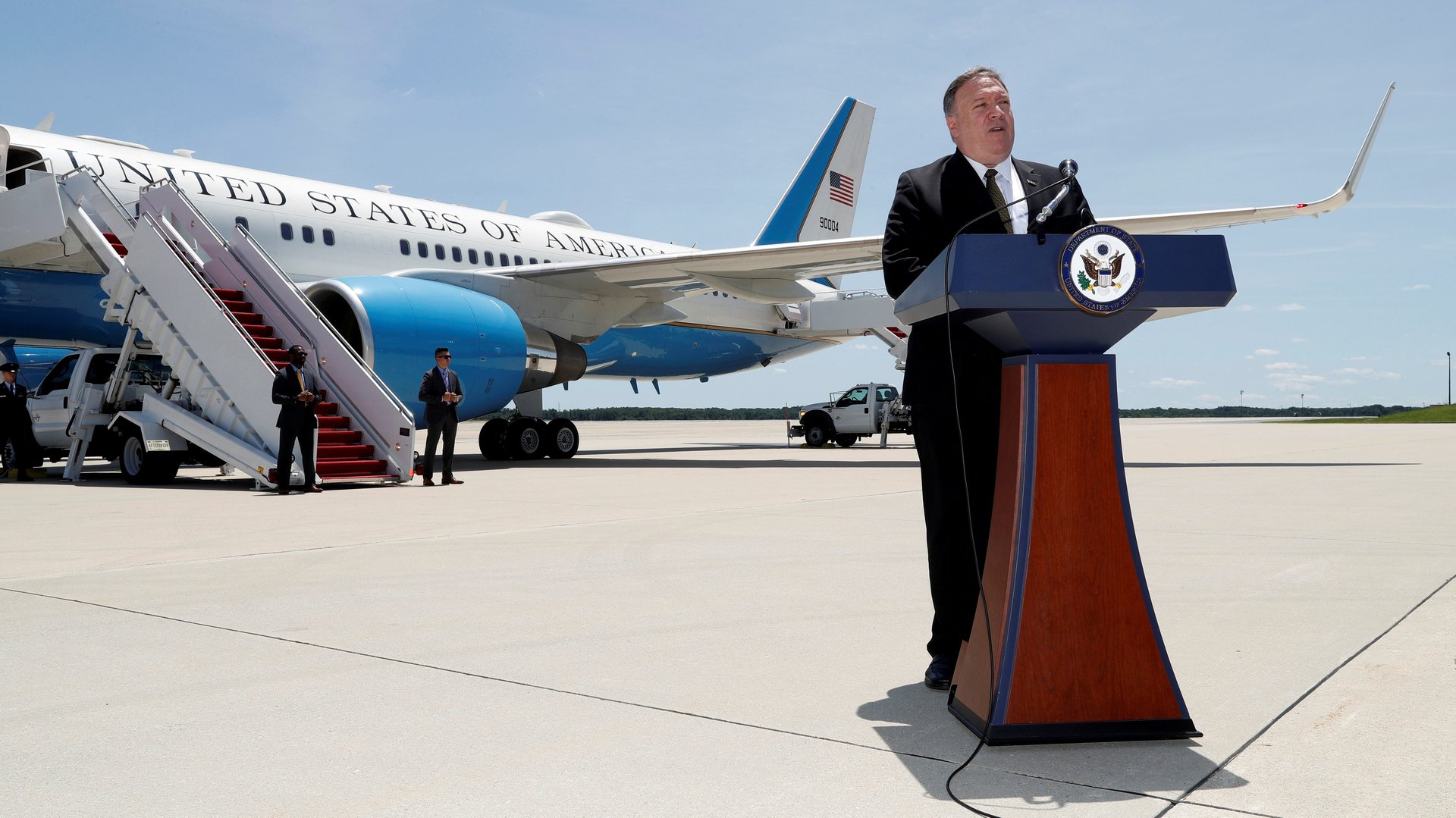US secretary of state Mike Pompeo is visiting India—with tonnes of oil and gas for sale
Secretary of state Mike Pompeo’s visit to New Delhi from June 25-27 will have a special focus on US fossil fuel exports to India.


Secretary of state Mike Pompeo’s visit to New Delhi from June 25-27 will have a special focus on US fossil fuel exports to India.
Indian imports of US crude oil rose three-fold month-on-month in March, the latest month for which Energy Information Administration data is available.
Further, in April, the US waiver, which allowed India to import oil from Iran despite sanctions, expired. The west Asian country has long been one of India’s top oil suppliers, exporting 23.5 million tonnes in financial year 2019.
Prevented from trading with Iran, India is now increasingly dependent on other oil-producing countries, including the US, to meet its growing demand.
At a June 12 meeting of the US-India Business Council industry group in Washington DC, Pompeo touted his country’s ability to become a major oil and natural gas supplier to India, “so they will no longer have to rely on difficult regimes like those in Venezuela and in Iran.”
“We’ve been blessed with abundant affordable energy right here in the United States, and we’re now producing it at enormous levels, not just crude oil but natural gas as well,” he said. “(T)he state department’s role is to make sure that we’re out talking about that, sharing with other countries that…we can be a reliable partner for their energy.”
Gas and petroleum products
The US has found a sweet spot in Indian prime minister Narendra Modi’s thrust for gas as a replacement for more-polluting fuels such as petrol (gasoline) and diesel, said Kashish Parpiani, research fellow at the Observer Research Foundation, a New Delhi-based non-profit.
“The US is pushing for policy formulation in the direction of gas in India,” said Deepak Mahurkar, partner and leader for oil and gas at PwC India consultancy.
Indian imports of other American petroleum products such as ethane and propane, which have several industrial uses, will also rise since they are present in richer quantities in US oil than its west Asian counterpart, he added.
“Reliance recently purchased a ship to import propane from the US. PSUs (state-owned firms) are also setting up shipping channels,” Mahurkar said.
Constraints and opportunities
The US’s geographical distance renders it a less favourable supplier to India than west Asian nations.
While ships can economically sail from the Gulf to India carrying oil quantities as low as 60 to 40 tonnes, a journey from the US is feasible only on very large crude carriers, Mahurkar said. And while voyages from the US last around 50 days, those from west Asia take only eight to 10 days.
However, the US’s ongoing trade war with China is opening up new possibilities. China has been the biggest importer of American liquefied petroleum gas (LPG). But it is now buying more from west Asia. This has driven up Gulf LPG’s prices, raising the US’s competitiveness as a supplier for India.